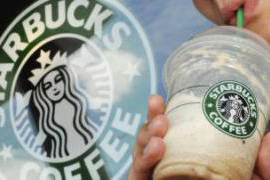
From the January 2010 Globe and Mail Report on Business Magazine
If you want to make people feel good about your company, it doesn’t hurt to make them feel good about themselves
“Paying it forward” is an old idea with new life lately. Brands as different from one another as Dove, Starbucks, TalkTalk wireless in Britain, and the Albertan credit union Servus have each launched promotional campaigns that blur the line between business and philanthropy.
Benjamin Franklin pioneered the idea more than 200 years ago when he lent a colleague some money on the condition that it be repaid not to Franklin but to someone else in need. Franklin wrote at the time: “This is a trick of mine for doing a deal of good with a little money.”
Doing a lot with a little is also the idea behind the pay-it-forward campaigns of our own era. Dove’s “Evolution” campaign doesn’t pitch product, just quietly directs consumers to the Dove Self Esteem fund, which promotes healthy self-images for girls (call it “facilitated philanthropy”). But some companies have been taking the idea much further and actually giving cash to customers that they can donate wherever they like.
In October and November last year, Edmonton-based Servus Credit Union gave away $200,000 in $10 bills. Customers received the money with one condition: that they use the cash to perform a good deed and encourage the recipient to pass along a Servus “Feel Good Ripple” card when doing a good deed of their own. “Ripple” stories are shared in branch scrapbooks and on Servus’s website.
The public and media response to the Servus initiative has been “overwhelming,” says Gail Stepanik-Keber, the company’s chief marketing officer. Servus designed the program to “help people think beyond the stress of the moment,” she says. But the campaign is bigger than that now, with more than 900 stories posted to the website, dozens of YouTube videos of Feel Good Ripple moments, and more press than a regional credit union might have expected to generate in a decade.
Maybe the idea caught fire because, as the folks at Trendwatching.com suggested last year, we are living in Generation G (that would be G for Generosity, not G for Greed, they said). More likely, news of Feel Good Ripples spread due to what Wharton School professor Jonah Berger calls “social contagion,” a mechanism by which consumers and media decide what to pass along.
“People like to talk about what is surprising, remarkable and unexpected,” Berger says. “They also like to talk about what makes them look good. Self-interest is a big driver.”
Of course, Servus was uniquely suited to such a campaign. The company’s brand statement is “Feel good about your money.” Plus, as a credit union, Servus belongs to a sector with a cherished ethic of community giving. To customers and commentators alike, the Feel Good Ripple felt uncommonly authentic.
For more hedonistic brands, the experience has been mixed. In 2006, news of a pay-it-forward phenomenon at Starbucks drive-throughs began to make the rounds. Customers pulled up to the window only to be told the driver ahead had already paid for their coffee. The cashier then asked if they would like to pay for the customer behind them. These chains of benevolent coffee purchases reportedly carried on unbroken for hours at a stretch (and still do, by some accounts). Starbucks received some positive feedback in the mainstream press, but bloggers sniffed that the whole thing felt contrived.
Regardless of what the pundits thought, Starbucks customers reported feeling good about themselves. And that may be the real dividend from initiatives of this type. Berger’s assertion that acts of generosity are driven by self-interest may not be so cynical after all. In other words, if your company can make customers feel good-even in such an oblique fashion as facilitating their philanthropy-the customers are likely to transfer some of that goodwill back to your brand. That’s a “trick” of which Benjamin Franklin might have approved.

